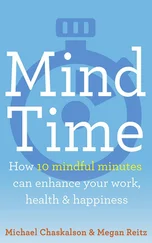Towards the end of the nineteenth century that began to change as European explorers, scholars and colonial administrators began to discover and translate into their own contexts some of what was going on in Asian monasteries. At first, only a tiny handful of these took up the practices for themselves, and the penetration of mindfulness approaches into European and North American culture was slow and gradual. But it built steadily and received a boost in the 1950s with the emergence of the Beats – poets and writers like Allen Ginsberg, Jack Kerouac and Gary Snyder, who began to publicly advocate the practice. It received more of a boost in the 1960s and 1970s with the psychedelic movement, when people like myself – hippies and wannabe hippies – began to get involved. But mindfulness practices were still largely to be found only in Buddhist contexts.
Towards the end of the 1970s, however, a very significant shift took place. Much of this comes down to Jon Kabat-Zinn. Jon had trained as a molecular biologist and was working as such at a hospital near Boston – the University of Massachusetts (UMass) Medical Center. In his student days he had come upon Buddhism and had established a regular daily meditation practice. Apart from his work at the hospital, he also taught yoga. He engaged with his scientific work, but two other questions kept bothering him. One question he expressed as ‘What shall I do with my life? What kind of work do I love so much I would pay to do it?’ The other was more to do with the patients who came to the hospital.
He saw that people came to the hospital because, in one way or another, they were suffering. But how many of them, he wondered, left the hospital with that suffering resolved? In discussion with physicians at the hospital he came to the conclusion that it was maybe something like 20 per cent of patients. What, he wondered, was the system offering to the other 80 per cent?
While on a silent meditation retreat in 1979 these two streams of questioning resolved themselves in a ‘vision’ lasting maybe 10 seconds, which Jon describes as an instantaneous seeing of vivid, almost inevitable connections and their implications.
He recognised in that moment that the way he was working on that retreat on his own mind and mental states might have enormous benefits for the people who came to the hospital with their suffering. He saw that it might be possible to share the essence of the meditation and yoga teachings that he had been practising for the past 13 years with those who might never come to a Buddhist centre, and who would never be able to discover that essence through the words and forms that were used in such places. He resolved to try to make the practices and the language used to describe them so commonsensical that anyone might benefit from them.
Jon persuaded the hospital authorities to let him and his colleagues have some space in the basement, and there they developed what soon came to be known as the eight-week Mindfulness-Based Stress Reduction (MBSR) programme. He and his colleagues worked to develop a contemporary vocabulary that spoke to the heart of the matter without reference to the cultural aspects of the traditions out of which those practices emerged.
Jon had trained as a scientist and knew the value of research, so he and his colleagues researched the patient outcomes of their programme and, bit by bit, what is now a very considerable body of research evidence into the efficacy of the training began to emerge. At the time of writing there are many thousands of peer-reviewed scientific papers investigating the effects of mindfulness training. If you’re interested in these, you’ll find an extensive database of them at www.mindfulexperience.org.
It soon became clear that MBSR training enabled people to deal much better with chronic pain. They also became more adept at managing the various stressors that accompanied whatever issues had brought them to the hospital. The research indicates that the programme is successful at helping people deal with difficulty and, at the time of writing, more than 20,000 people have completed the eight-week course at UMass itself. More than 740 academic medical centres, hospitals, clinics and freestanding programmes offer MBSR to the public around the world, and interest in mindfulness training has continued to build as it has become increasingly apparent that it is not only stress and chronic pain that are positively affected when you learn to work with your attention in a different way.
Biological changes started to show up in the research as well. One early instance of this was the finding that, among patients who came to the hospital for treatment for psoriasis, the symptoms of those who engaged in the MBSR course alongside that treatment cleared up around 50 per cent faster than the symptoms of patients who didn’t. What this seemed to show was that what people were doing with their minds, the work they were doing with their attention, was actually changing their bodies.
The understanding of the way in which mindfulness training affects us biologically received a further boost when neuroscientists began to investigate its effects.
Part of this story goes back to 1992, when a small group of neuroscientists led by Professor Richard Davidson and helped by Alan Wallace, a Western Buddhist scholar, travelled to Dharamsala in the foothills of the Indian Himalayas on a kind of neuroscience expedition. They took with them an array of what was then cutting-edge scientific equipment: laptop computers, electroencephalographs, battery packs and a generator. They wanted to meet some of the Tibetan Buddhist hermit-meditators who lived in the hills above the town and they hoped to recruit from among them a cohort of expert meditators – people who had put in tens of thousands of hours of meditation practice. The neuroscientists wanted to study the pattern of their brain activity. They were particularly interested in the habits of thinking and feeling they exhibited when not meditating. If these demonstrated that the subjects had unusual habitual traits, these might reflect enduring functional changes that had occurred in their brains as a result of their mental training.
This first foray simply failed. To begin with, the yogis were unimpressed by what seemed to them to be the scientists’ uninformed and naïve perspectives on meditation. ‘We seemed like primitive Neanderthals to them,’ explained Alan Wallace, who helped to facilitate the encounters.
In the end the scientists got no usable data from that trip. But they’d made a start and, with the Dalai Lama’s help, in 2001 a number of maroon-robed Tibetan Buddhist monks began to make their way to Davidson’s Laboratory for Affective Neuroscience in Madison, Wisconsin, to meditate with EEG caps stuck on their already shaven heads. These were ‘Olympic-level athletes’ of meditation, with many years of intensive practice behind them. The results were astounding. The expert meditators exhibited patterns of brain activity never before measured by science. We’ll look in more detail at some of these findings in Week Three. They’re particularly interesting because from them scientists were encouraged to investigate what changes might show up in people who had no previous meditation experience and who took up an eight-week mindfulness training course. Here, they found (and research continues to find) highly significant changes in the patterns of brain activation – and even changes in the brain’s physical structure – that follow from just eight weeks of mindfulness training.
 Box 2: Mindfulness-Based Cognitive Therapy
Box 2: Mindfulness-Based Cognitive Therapy
A significant event in the development of secular mindfulness training came about in 1992 when three distinguished cognitive psychologists – Zindel Segal, Mark Williams and John Teasdale – were asked by the director of a clinical psychology research network to develop a group-based therapy for the treatment of relapsing depression.
Читать дальше

 Box 2: Mindfulness-Based Cognitive Therapy
Box 2: Mindfulness-Based Cognitive Therapy










